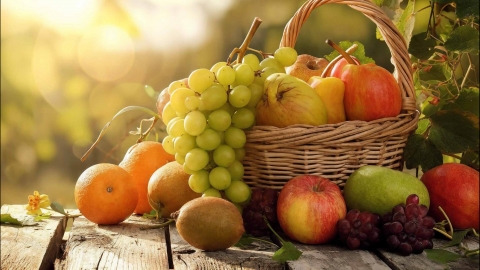What Are the Three Fruits That Dampness Fears the Most?
Generally speaking, there is no such saying as "dampness fears three types of fruits the most." Patients with dampness constitution are more suitable to eat fruits such as apples, oranges, papayas, pineapples, and watermelons. These fruits help regulate the body's condition and assist in improving dampness-related issues. Detailed analysis is as follows:
1. Apples
Apples are neutral in nature and sweet in taste, rich in pectin and dietary fiber. Pectin promotes intestinal peristalsis, helping to eliminate waste and excess water from the body, while dietary fiber regulates intestinal function and reduces dampness accumulation. Apples are also mild in nature, suitable for most people with dampness constitution. Eating one apple daily is beneficial to the body.
2. Oranges
Oranges are cool in nature and sour in taste, containing abundant vitamin C and flavonoids. Vitamin C enhances immunity, while flavonoids have antioxidant effects, promoting the body's metabolism and helping eliminate dampness. With high water content and a sweet-sour taste, oranges can stimulate appetite, making them suitable for people with dampness-related loss of appetite.

3. Papaya
Papaya is warm in nature and sweet in taste, containing papain enzymes. These enzymes help break down fats and proteins, promoting digestion and absorption, reducing the burden on the spleen and stomach, thereby enhancing the spleen and stomach's ability to transform and transport water, which helps alleviate symptoms like indigestion caused by dampness. Papaya can be eaten raw or cooked into desserts.
4. Pineapple
Pineapple is slightly cold in nature, sweet and sour in taste, containing bromelain enzymes. This component promotes digestion, improves gastrointestinal function, helps eliminate excess water and toxins from the body, and can alleviate symptoms like bloating and loss of appetite caused by dampness. However, pineapple has a high sugar content, so excessive consumption should be avoided. It is best to soak it in salt water before eating.
5. Watermelon
Watermelon is cold in nature and sweet in taste, with a very high water content. It can replenish body fluids, has diuretic properties, promotes urination, and helps remove dampness from the body. However, due to its cold nature, those with dampness constitution and a cold body should not consume too much watermelon, as it may worsen internal cold symptoms.
Patients with dampness should eat these fruits in moderation, avoiding excessive consumption at one time. Additionally, they should combine other dampness-resolving dietary and lifestyle habits, such as eating more light and easily digestible foods, engaging in moderate exercise, and avoiding damp environments, to better improve dampness-related conditions. If symptoms of dampness are severe, it is recommended to consult a doctor for appropriate regulation.







